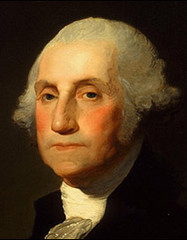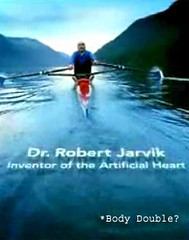If you ever wondered why journalists aren’t crazy for public relations, look no further than the misguided few. I was pitched by the outside public relations team for MyClick Media Limited (MyClick). It was a disaster, from start to non-finish.
The pitch came across like spam.
Headline: If you are working Monday, I would like to introduce you to this technology… Body: … and meet the MyClick team. Please let me know.
The release was loaded with marketing puff.
Release: MyClick is a ground breaking and unique photo recognition Mobile Marketing Platform that empowers all mobile users with the chance to enjoy exciting and exclusive infotainment and m-commerce information upon demand. Translation: MyClick employs photo recognition in promotional material, allowing mobile phone users to take pictures of promotional material to win coupons.
The technology was interesting.
The story is Pizza Hut using MyClick technology for a promotion in mainland China. So despite the pitch deficiencies and the release idiosyncrasies, I decided to follow up despite what appeared to be a one-day holiday offer. My mistake.
The responses were irritating.
“What pub do you work for I am sorry to ask you.”
Never mind they pitched me. Ho hum. Sure, I could have mentioned any number of publications that we string for from time to time, a number of accounts who might be interested in MyClick technology, or my position as an instructor. But that seems like disingenuous carrot dangling to me. So I simply mentioned this blog because they pitched this blog and my intent was to write about MyClick on this blog.
"do you want a face to face"
I’m based in Las Vegas. So considering the public relations firm has offices in California and New York and MyClick is based in China, this seemed a bit extreme for a Pizza Hut promotion. Maybe it’s me, but given the pitch, I assumed the public relations firm might have had something in mind for Monday, unless of course, the whole “Meet the MyClick team on Monday” thing was a ploy. You think?
I said it wasn’t necessary, but put the burden of a solution back on them. Other than answering my question whether the Pizza Hut promotion was exclusive to China, nothing. Yeesh. This was starting to feel like too much work so I alluded to pulling the plug.
I decided to pull the plug.
“Okay,” I wrote. “It's still an interesting concept, but I'm starting to sense you were not prepared for someone to respond to the pitch. So, you've really left me at a loss here. Maybe it would be best to skip it, other than to address the dangers of mass pitch emails.”
"fine"
My pleasure, sort of. I don’t really want to embarrass the firm completely so I’m omitting their name. Though, I must admit, I am tempted. Bad handling affects the entire industry. Lesson for today: if you aren’t interested in contact, then don’t send an invitation pitch.
Public relations professionals would be better off following the practices of the public relations team working with Loomia, who pitched us a week or so prior. Their pitch was timely, professional, personalized, and what started out as a singular post has now popped up around the Web. I’d work with them anytime they have news.
This post might pop up around the Web too. But I don’t think it’s the kind of coverage MyClick paid for. As for my take on their technology, it has become just another footnote in how bad public relations practices detract from otherwise interesting news.

The pitch came across like spam.
Headline: If you are working Monday, I would like to introduce you to this technology… Body: … and meet the MyClick team. Please let me know.
The release was loaded with marketing puff.
Release: MyClick is a ground breaking and unique photo recognition Mobile Marketing Platform that empowers all mobile users with the chance to enjoy exciting and exclusive infotainment and m-commerce information upon demand. Translation: MyClick employs photo recognition in promotional material, allowing mobile phone users to take pictures of promotional material to win coupons.
The technology was interesting.
The story is Pizza Hut using MyClick technology for a promotion in mainland China. So despite the pitch deficiencies and the release idiosyncrasies, I decided to follow up despite what appeared to be a one-day holiday offer. My mistake.
The responses were irritating.
“What pub do you work for I am sorry to ask you.”
Never mind they pitched me. Ho hum. Sure, I could have mentioned any number of publications that we string for from time to time, a number of accounts who might be interested in MyClick technology, or my position as an instructor. But that seems like disingenuous carrot dangling to me. So I simply mentioned this blog because they pitched this blog and my intent was to write about MyClick on this blog.
"do you want a face to face"
I’m based in Las Vegas. So considering the public relations firm has offices in California and New York and MyClick is based in China, this seemed a bit extreme for a Pizza Hut promotion. Maybe it’s me, but given the pitch, I assumed the public relations firm might have had something in mind for Monday, unless of course, the whole “Meet the MyClick team on Monday” thing was a ploy. You think?
I said it wasn’t necessary, but put the burden of a solution back on them. Other than answering my question whether the Pizza Hut promotion was exclusive to China, nothing. Yeesh. This was starting to feel like too much work so I alluded to pulling the plug.
I decided to pull the plug.
“Okay,” I wrote. “It's still an interesting concept, but I'm starting to sense you were not prepared for someone to respond to the pitch. So, you've really left me at a loss here. Maybe it would be best to skip it, other than to address the dangers of mass pitch emails.”
"fine"
My pleasure, sort of. I don’t really want to embarrass the firm completely so I’m omitting their name. Though, I must admit, I am tempted. Bad handling affects the entire industry. Lesson for today: if you aren’t interested in contact, then don’t send an invitation pitch.
Public relations professionals would be better off following the practices of the public relations team working with Loomia, who pitched us a week or so prior. Their pitch was timely, professional, personalized, and what started out as a singular post has now popped up around the Web. I’d work with them anytime they have news.
This post might pop up around the Web too. But I don’t think it’s the kind of coverage MyClick paid for. As for my take on their technology, it has become just another footnote in how bad public relations practices detract from otherwise interesting news.






















